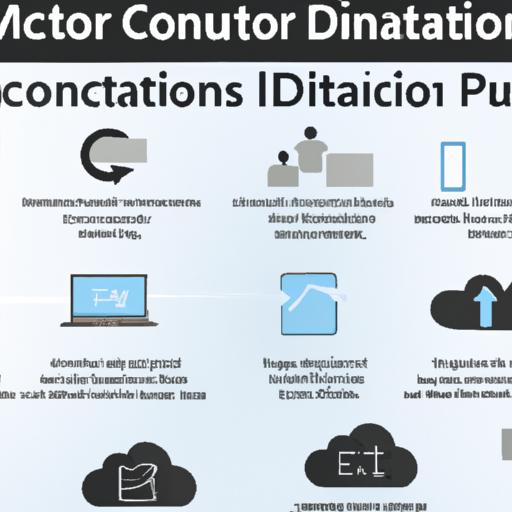Benefits of Data Center Migration to Cloud

Planning is essential when moving a data center to the cloud. IT professionals must evaluate cloud providers, develop a migration plan, and ensure data security and compliance.
In recent years, data center migration to cloud has become increasingly popular among organizations of all sizes. The adoption of cloud computing has revolutionized the way businesses operate, offering a wide range of benefits that traditional on-premises data centers cannot match. Here are some of the key benefits of data center migration to cloud:
Cost savings
One of the most significant benefits of data center migration to cloud is cost savings. Cloud computing eliminates the need for on-premises hardware and software, reducing upfront capital expenditures. Additionally, cloud providers typically offer pay-as-you-go pricing models, allowing businesses to scale their infrastructure up or down as needed and pay only for the resources they consume.
Scalability and flexibility
Another major advantage of cloud computing is scalability and flexibility. Cloud providers offer virtually unlimited storage and computing resources, allowing businesses to quickly and easily scale their infrastructure as their needs change. This provides a level of agility and flexibility that is difficult to achieve with traditional on-premises data centers.
Improved security
Cloud providers invest heavily in security measures to protect their infrastructure and customers’ data. By migrating to the cloud, businesses can take advantage of these advanced security features and reduce their exposure to potential security threats.
Increased efficiency
Cloud computing can help businesses improve their efficiency by automating many IT processes. This can reduce the burden on IT staff and free up resources to focus on more strategic initiatives.
Disaster recovery and business continuity
Cloud providers offer robust disaster recovery and business continuity solutions, ensuring that businesses can quickly recover from unexpected disruptions. This provides peace of mind and minimizes the potential impact of downtime on their operations.
In the next section, we will discuss the planning process for data center migration to cloud.
Data Center Migration to Cloud: Planning for Success

Data center migration to cloud offers many benefits including cost savings, scalability, improved security, and increased efficiency.
Data center migration to the cloud is a complex process that requires careful planning and execution. To ensure a successful migration, organizations need to take several factors into consideration. In this section, we will discuss the key steps involved in planning for data center migration to cloud.
Assessing Existing Infrastructure
Before migrating to the cloud, it’s important to assess your existing infrastructure and identify any potential issues that may impact the migration process. This includes evaluating your current hardware, software, and network configurations to ensure compatibility with cloud services. You should also identify any legacy applications that may require additional support during the migration process.
Evaluating Cloud Providers
Choosing the right cloud provider is crucial to the success of your migration. Some of the key factors to consider when evaluating cloud providers include the provider’s reputation, security protocols, compliance certifications, pricing models, and scalability. It’s important to conduct thorough research and compare multiple providers to ensure you select the one that best meets your organization’s needs.
Developing a Migration Plan
A well-defined migration plan is critical to the success of your data center migration to the cloud. This plan should include a detailed timeline, resource allocation, and contingency plans for potential issues. It should also identify the specific workloads and applications that will be migrated to the cloud, as well as any dependencies that may exist between them.
Setting Timelines and Budgets
Migrating to the cloud can be a costly and time-consuming process, so it’s important to establish realistic timelines and budgets. This includes identifying the resources required for the migration, such as personnel, hardware, and software, and determining the expected costs associated with each.
Ensuring Data Security and Compliance
Maintaining data security and compliance is a top priority when migrating to the cloud. This includes ensuring that all data is encrypted both in transit and at rest, implementing robust access controls, and complying with any relevant regulations, such as HIPAA or GDPR. It’s also important to establish contingency plans in case of a data breach or other security incident.
By following these key planning steps, organizations can ensure a successful migration to the cloud that meets their specific needs and requirements. In the next section, we will discuss the challenges that organizations may face during the migration process and how to overcome them.
Best Practices for Data Center Migration to Cloud

Data center migration to cloud can transform an organization’s IT infrastructure, providing greater flexibility, agility, and cost savings.
Moving your data center to the cloud is a significant decision that requires proper planning and execution to ensure a smooth transition. Here are some best practices to consider when migrating your data center to the cloud.
Conducting a Pilot Migration
Before migrating the entire data center, it is advisable to conduct a pilot migration to a test environment. This approach enables you to identify and correct any issues that may arise during migration. Conducting a pilot migration also enables you to evaluate the performance of the cloud provider and determine if their services meet your requirements.
Adopting a Phased Approach
Migration to the cloud should be done in stages. You can start with non-critical applications and gradually move to critical applications. Adopting a phased approach reduces the risk of failure and enables you to identify and correct any issues before they become significant problems.
Communicating with Stakeholders
Effective communication is essential when migrating your data center to the cloud. You should inform all stakeholders of the migration plan, including the timeline, and the expected impact on business operations. Communication ensures that everyone is aware of the migration process and is prepared for any changes that may occur.
Testing and Validating the Migration
Testing and validating the migration is crucial to ensure that everything works as expected. You should test and validate the migration plan before executing it to identify and correct any issues that may arise during the migration process. Testing also ensures that the migration meets the expected performance and security standards.
Monitoring and Optimizing Performance
After the migration is complete, it is important to monitor and optimize performance continually. Monitoring helps you identify any issues that may arise and take corrective action. Optimization ensures that your data center operates efficiently and cost-effectively.
By adopting these best practices, you can ensure a successful data center migration to the cloud while minimizing risks and maximizing benefits.
Conclusion
Data center migration to cloud is a complex process that requires careful planning and execution. It is a vital step that businesses must take to stay competitive and agile in today’s fast-paced digital world. In this article, we have explored the benefits, challenges, and best practices of data center migration to cloud.
We have seen that data center migration to cloud offers numerous benefits, including cost savings, scalability, improved security, increased efficiency, and disaster recovery. However, it also presents various challenges, such as technical, organizational, cultural, and vendor lock-in.
To ensure a successful data center migration to cloud, businesses must develop a comprehensive plan that includes assessing existing infrastructure, evaluating cloud providers, developing a migration plan, setting timelines and budgets, and ensuring data security and compliance.
By adopting best practices such as conducting a pilot migration, adopting a phased approach, communicating with stakeholders, testing and validating the migration, and monitoring and optimizing performance, businesses can minimize the risks and maximize the benefits of data center migration to cloud.
In conclusion, data center migration to cloud is an essential step that businesses must take to stay competitive and achieve their goals. By following the best practices and taking a strategic approach, businesses can ensure a smooth and successful transition to the cloud.